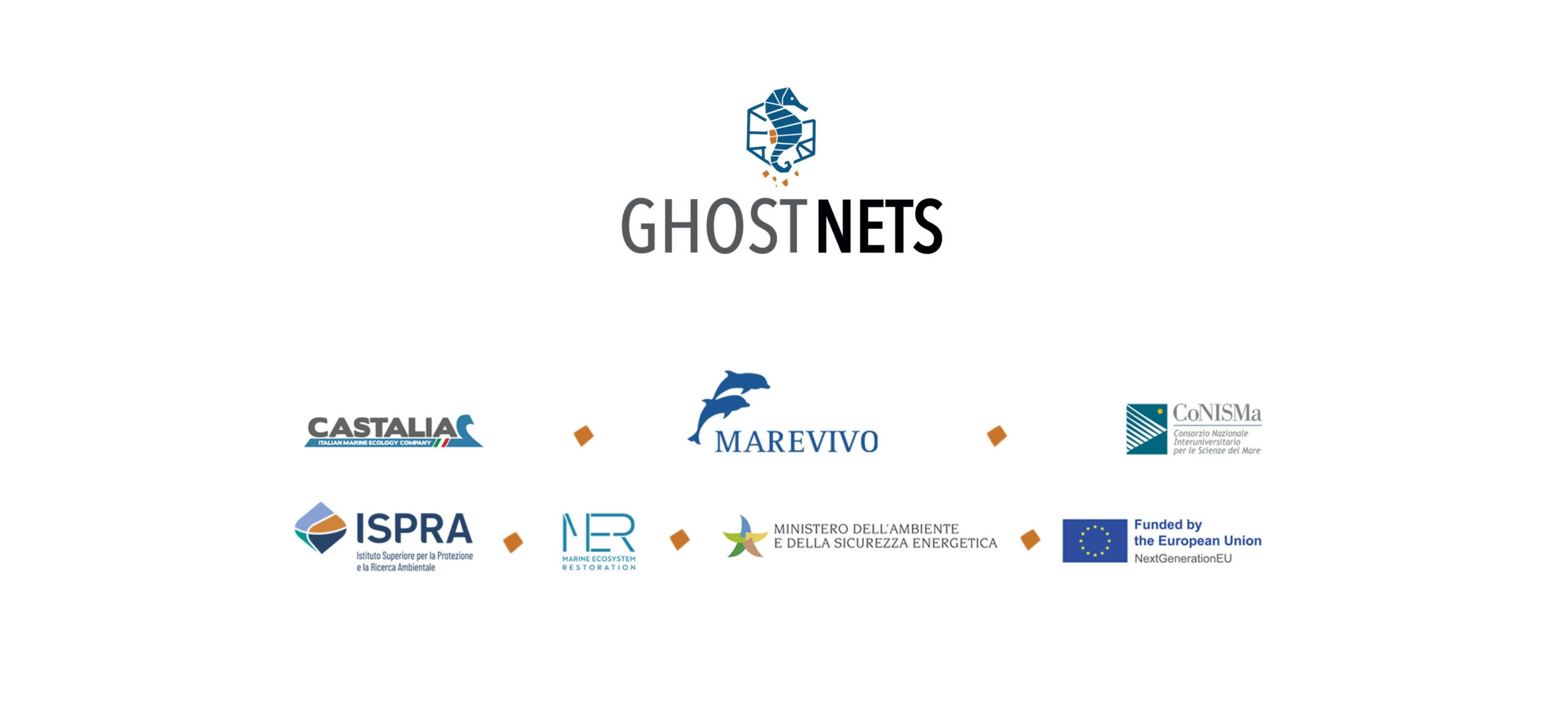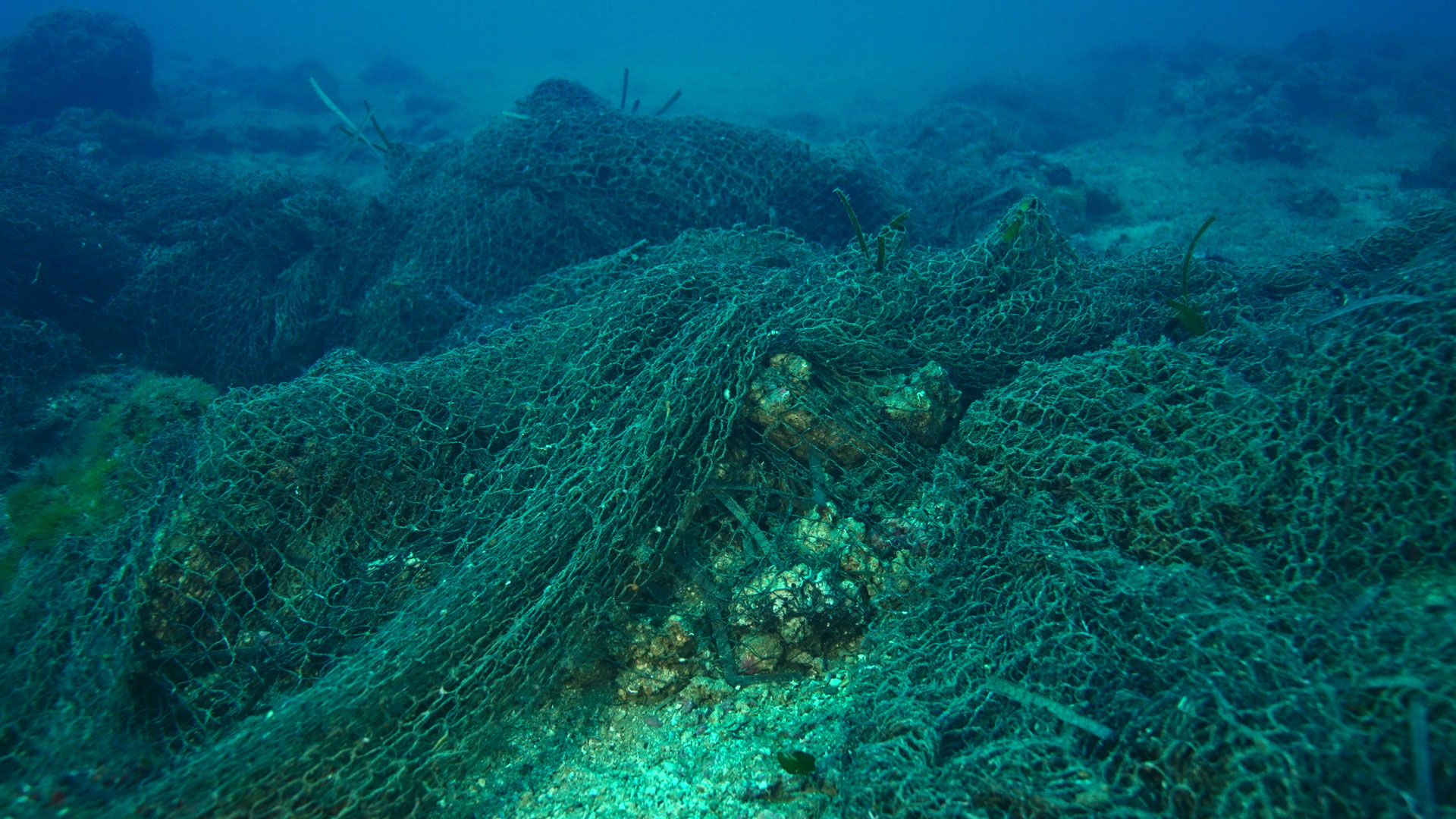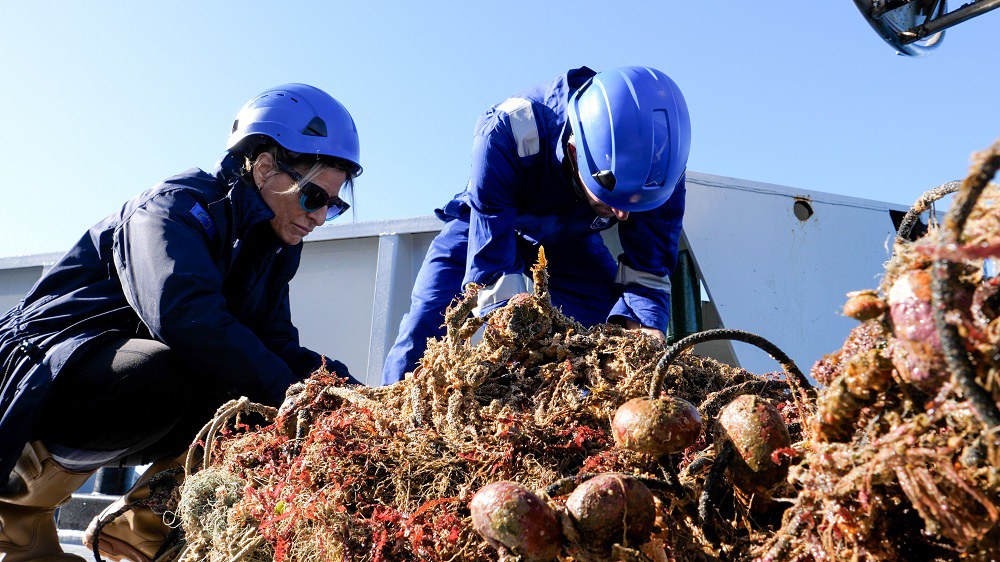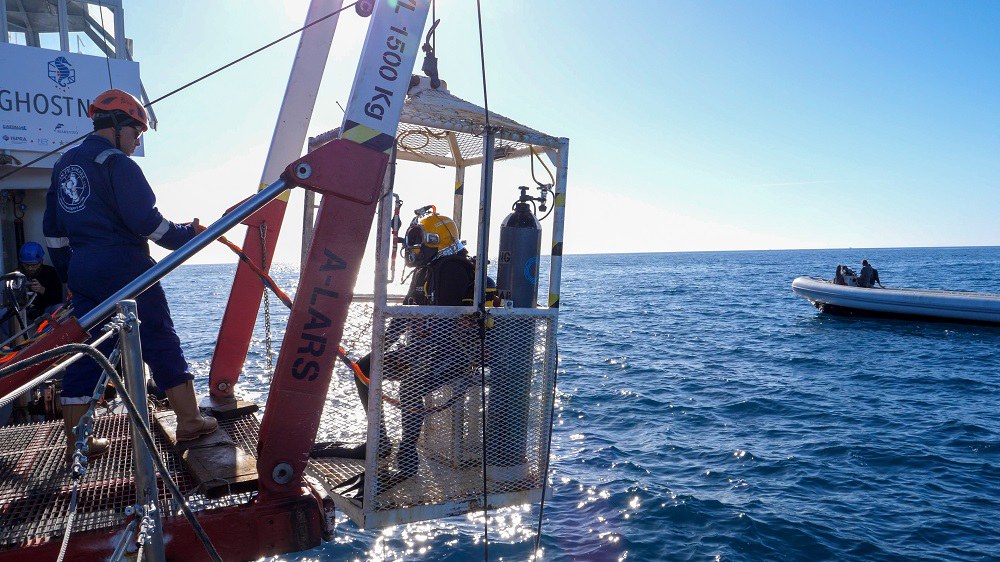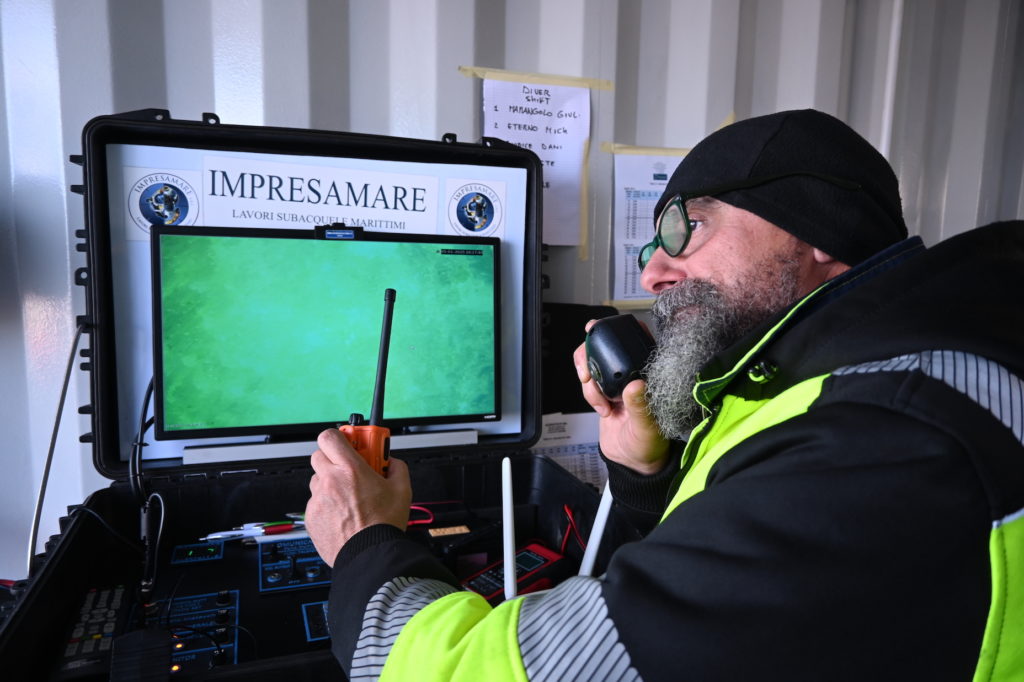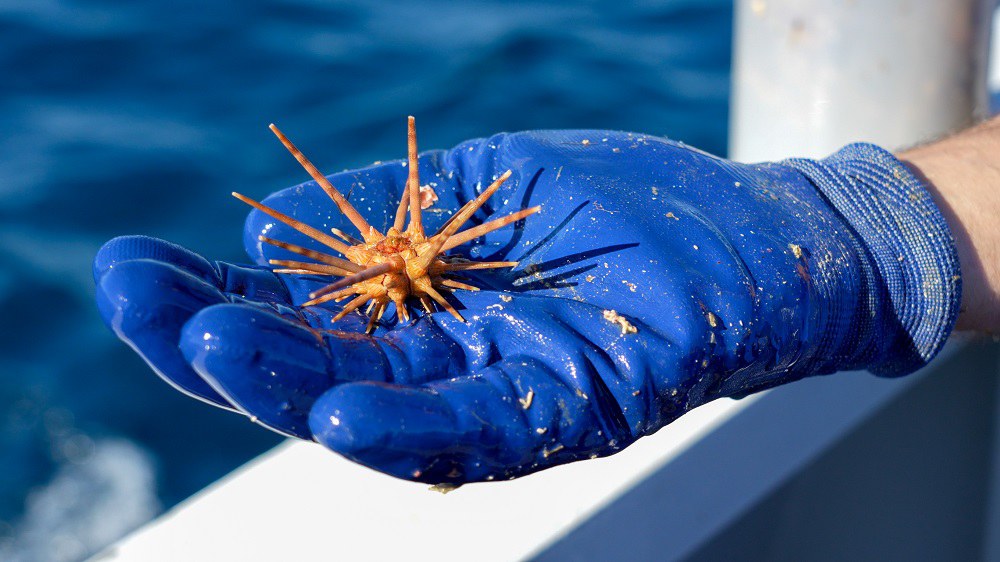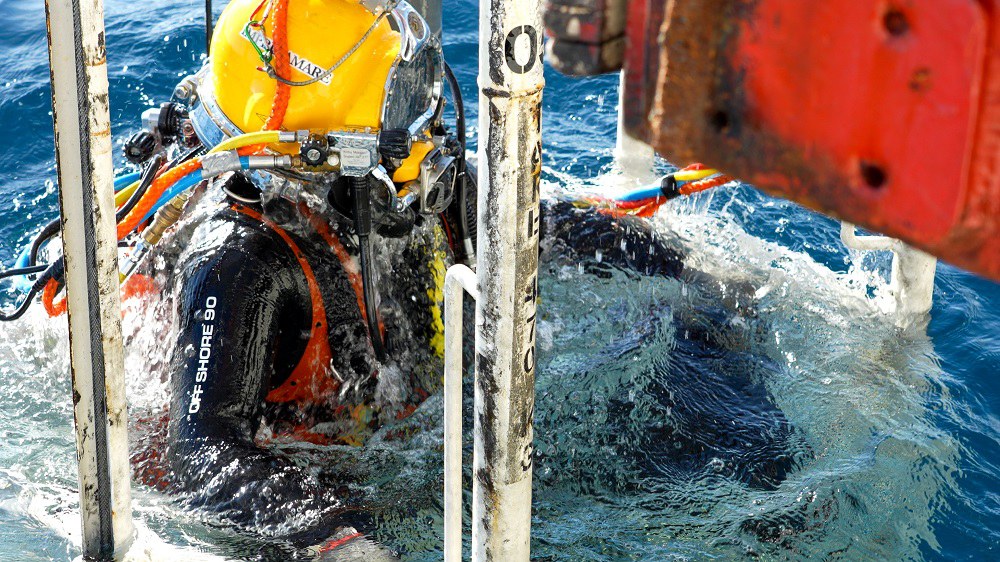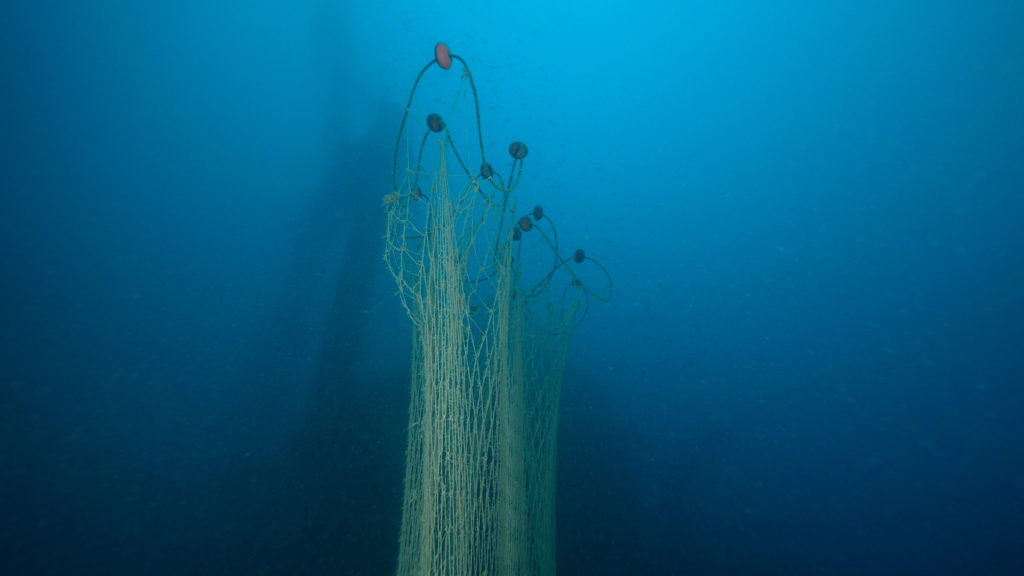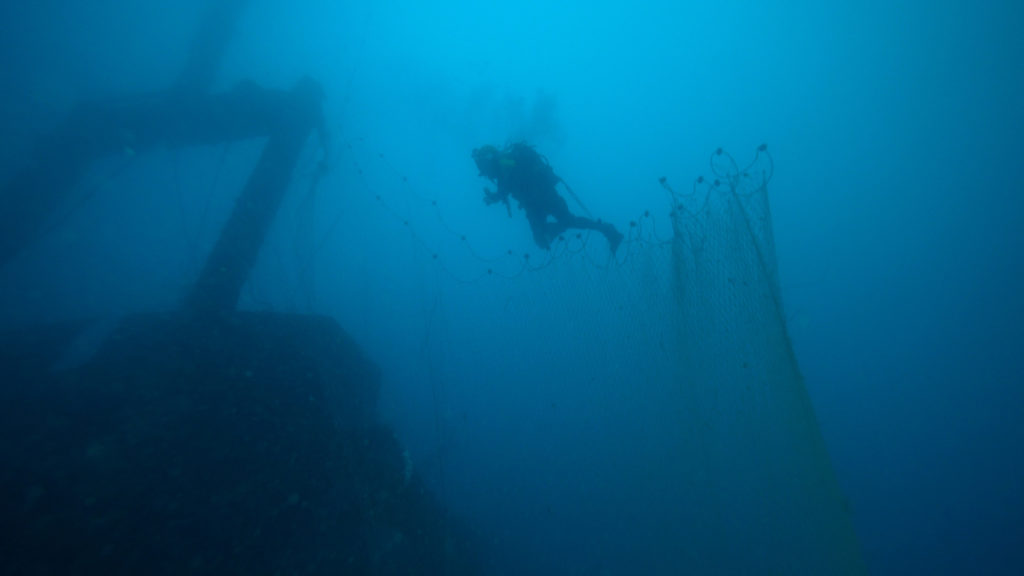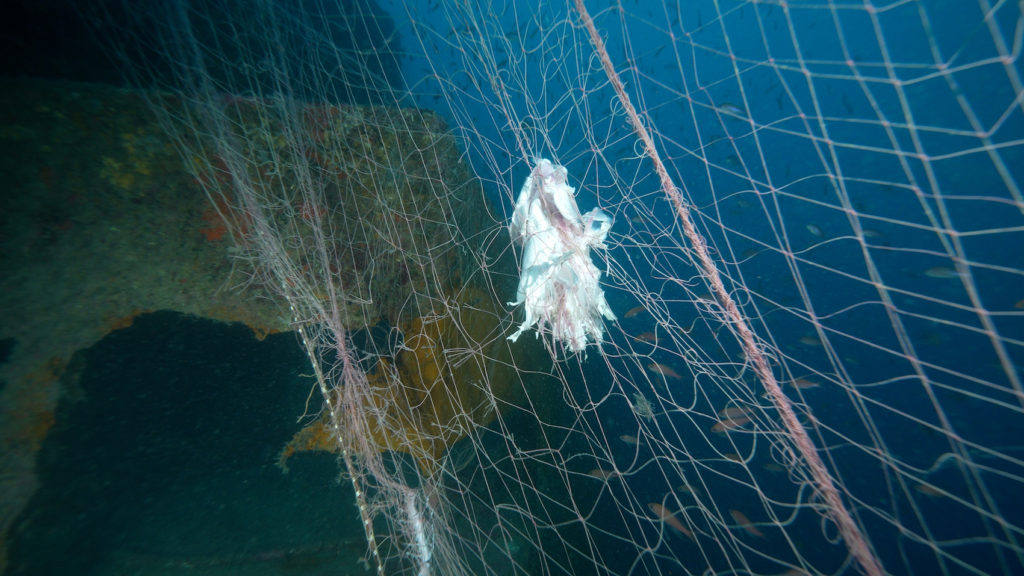
The intervention carried out by Marevivo, Castalia, and CoNISMa to restore marine habitats damaged by the removal of abandoned or lost fishing and aquaculture gear in the sea, as part of the PNRR MER – Marine Ecosystem Restoration, is the largest project for the restoration, protection, and monitoring of the Mediterranean Sea launched by ISPRA under the National Recovery and Resilience Plan (PNRR).
WHY THE PROJECT WAS CREATED
Every year, around 100,000 mammals and one million seabirds die due to entanglement in fishing nets or after ingesting fragments released into the sea. Data from the Italian Institute for Environmental Protection and Research (ISPRA) shows that 86.5% of waste in the marine environment is linked to fishing activities, with 94% of it being abandoned nets. “Ghost Nets,” the abandoned fishing nets, therefore represent one of the most insidious forms of marine pollution.
THE OBJECTIVES
The GHOSTNETS project aims to clear the seafloor of abandoned fishing gear and restore habitats at 20 sites along Italy’s coastlines in Liguria, Tuscany, Lazio, Campania, Sicily, Puglia, Marche, Emilia-Romagna, and Veneto, with the goal of preserving local wildlife and flora. This operation involves a team of “Ghostbusters of the seas”: highly skilled divers and remotely operated underwater robots with mechanical arms to cut, manipulate, and remove nets at depths greater than 40 meters. The process includes removal, collection, transport, proper disposal, and, if possible, recycling of the nets.
THE FIRST STAGES OF OPERATIONS
MONITORING
REMOVAL
CIRCULARE ECONOMY
Using discarded fishing nets to produce energy
RECOVERY | RECYCLING
Once the nets are hoisted aboard the pontoon, they will be carefully analyzed by marine biologists to free and return any organisms caught in their mesh to the sea. Each net will be examined to assess its potential for recycling or disposal; part of it will be sent to the Polytechnic University of Marche, which, in collaboration with IRIS Srl, will subject them to an experimental “pyrolysis” process. This is a special decomposition method that allows energy to be produced from waste using “Green Plasma”. By heating the plastic to temperatures above 800 degrees Celsius, a mixture of carbon monoxide and hydrogen is obtained, which can be used, for example, to charge electric vehicle batteries.
OPERATIONS
This is custom heading element
